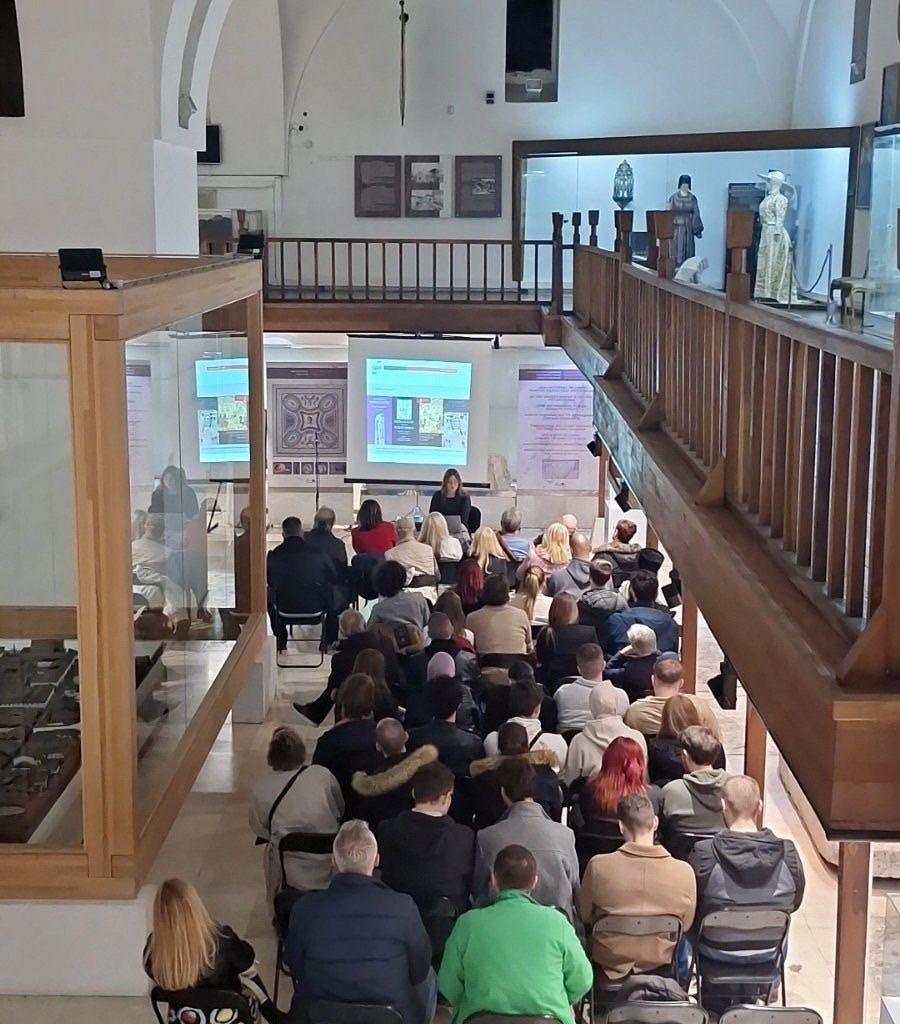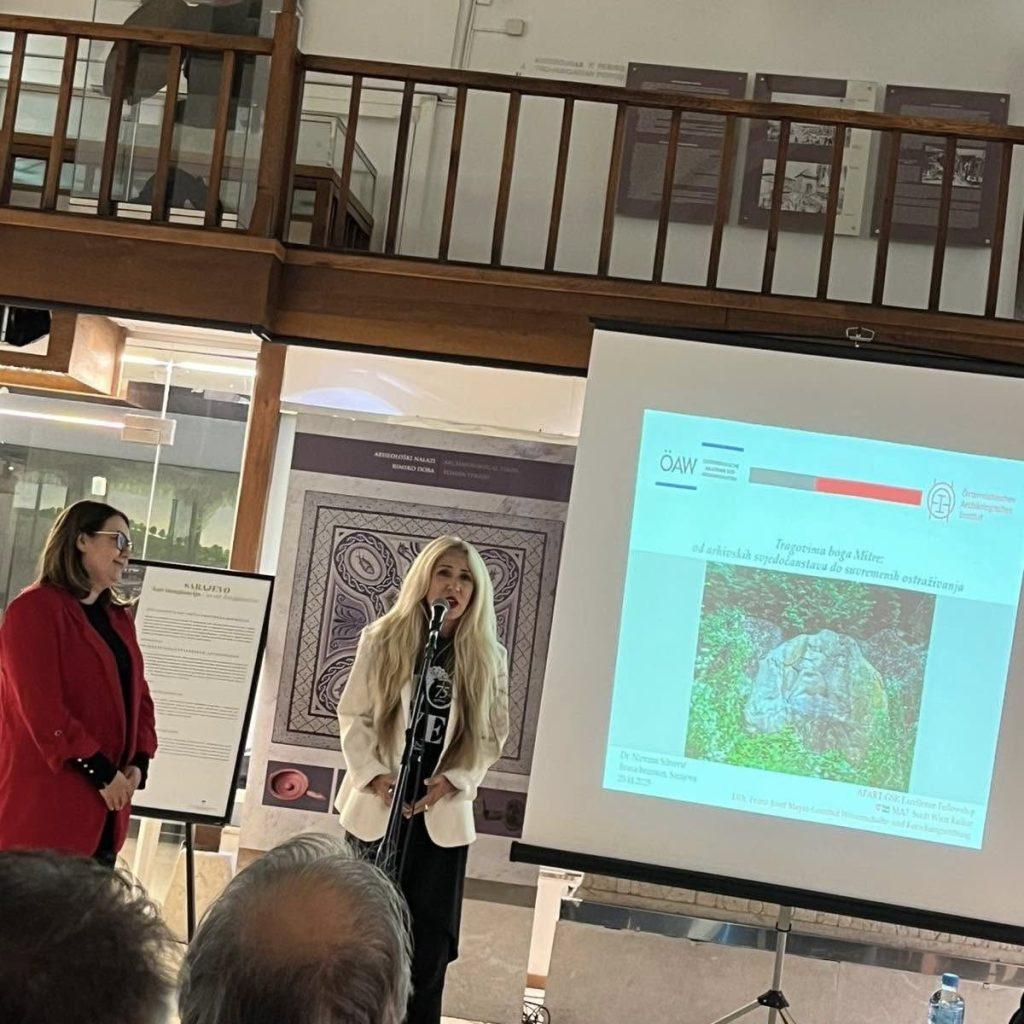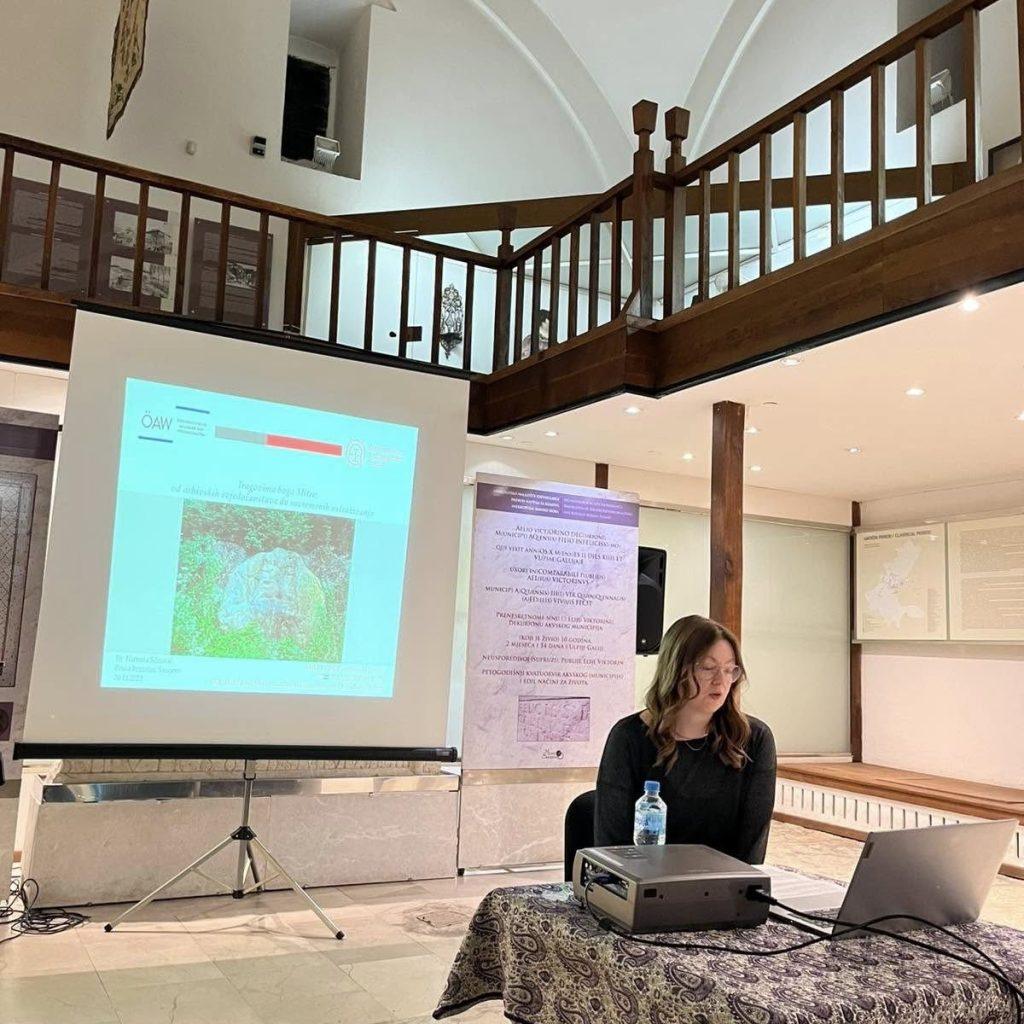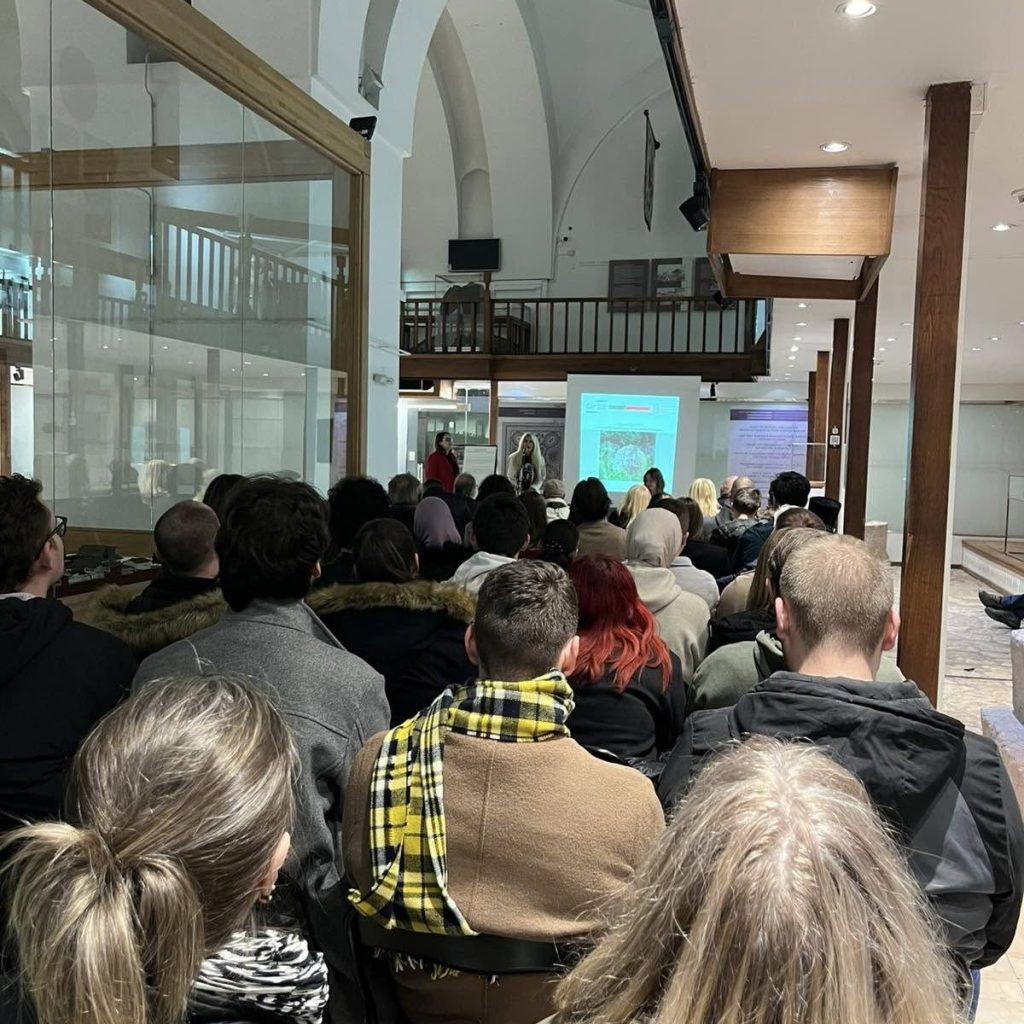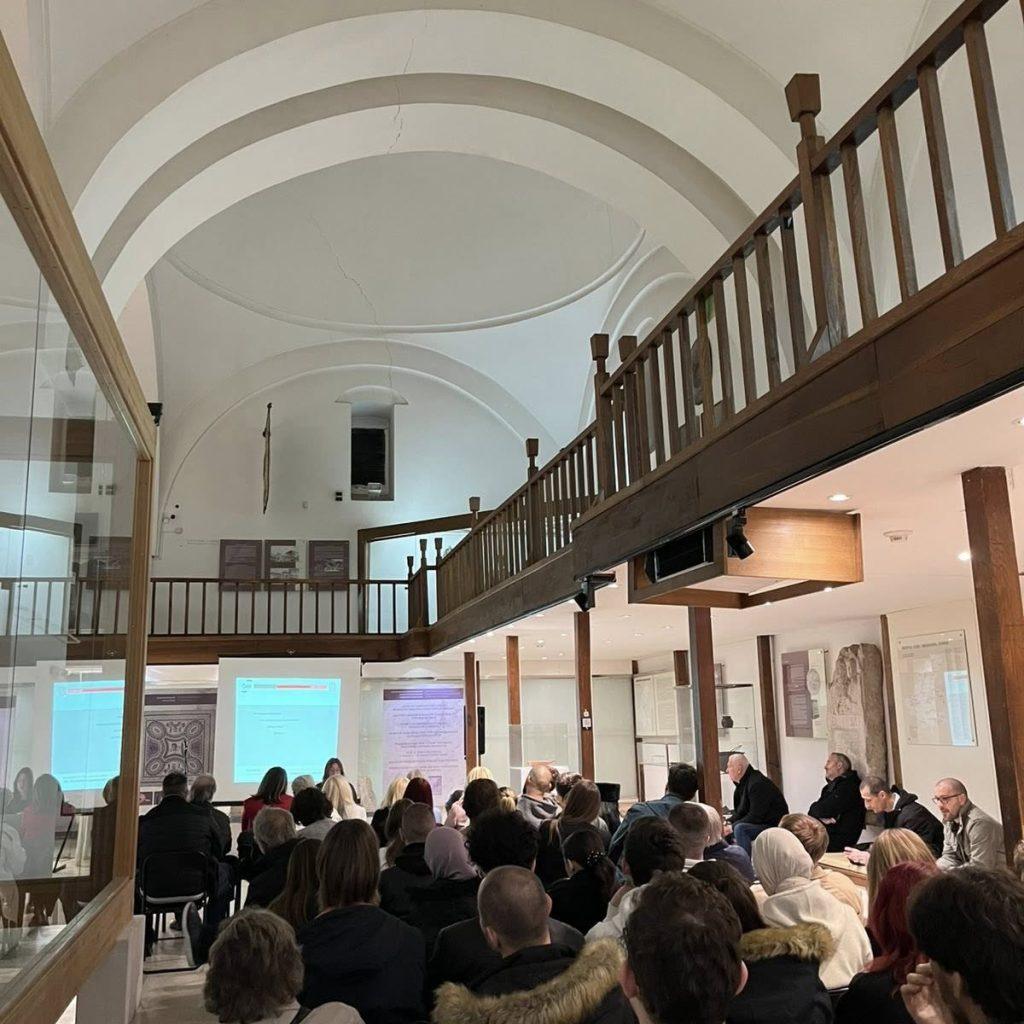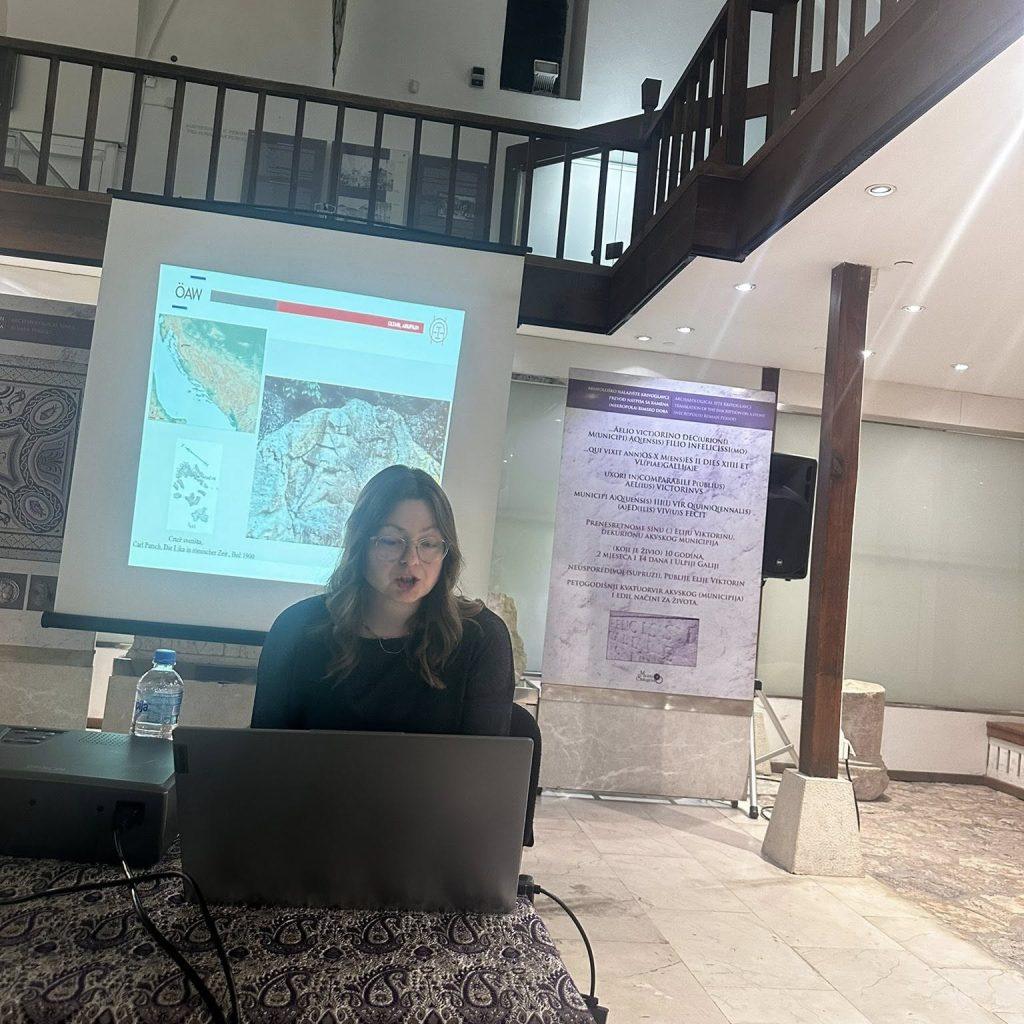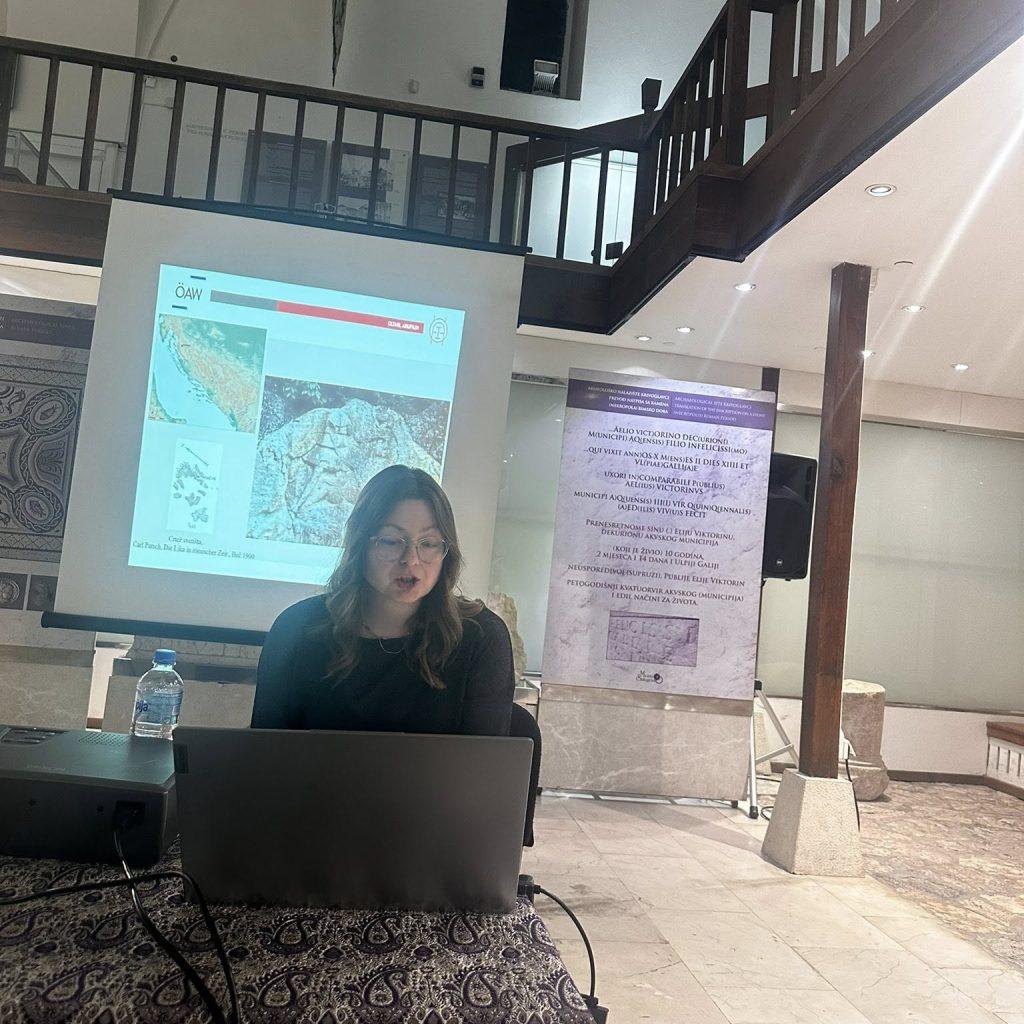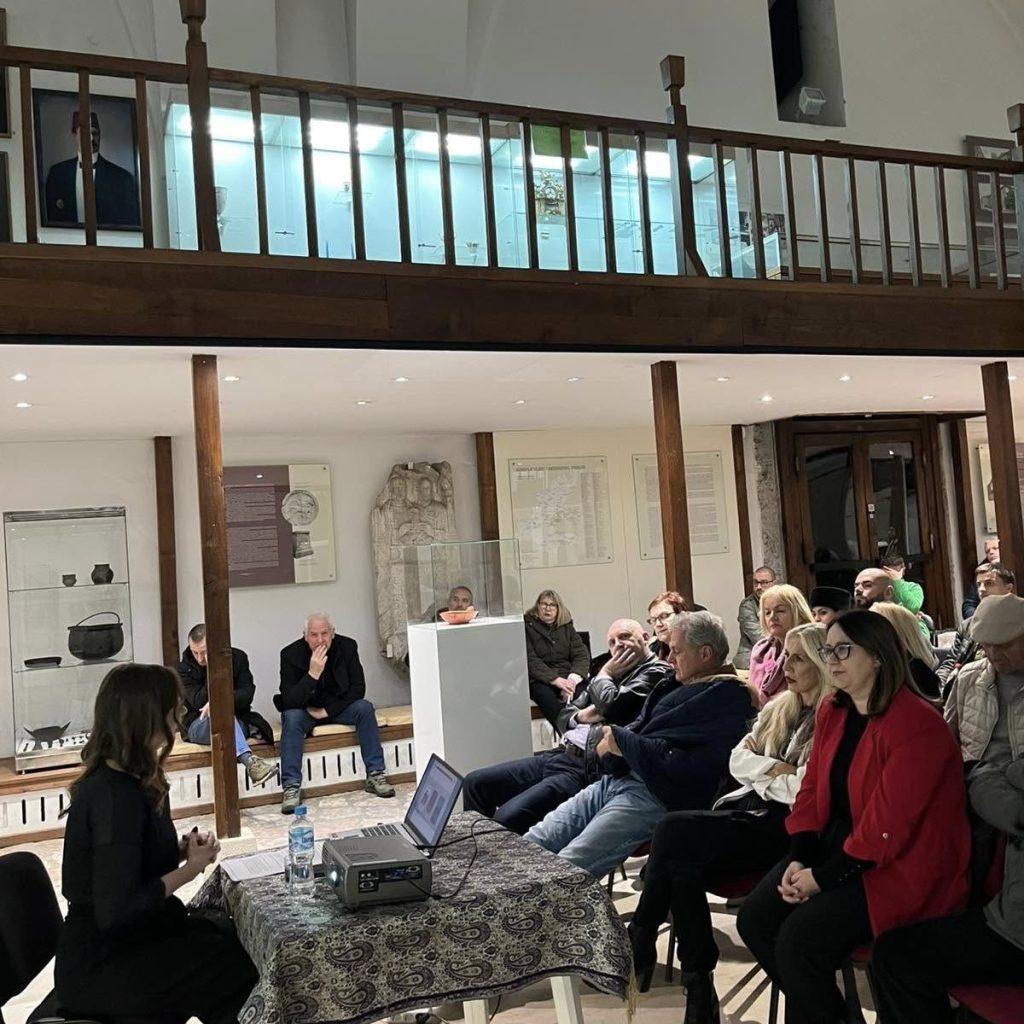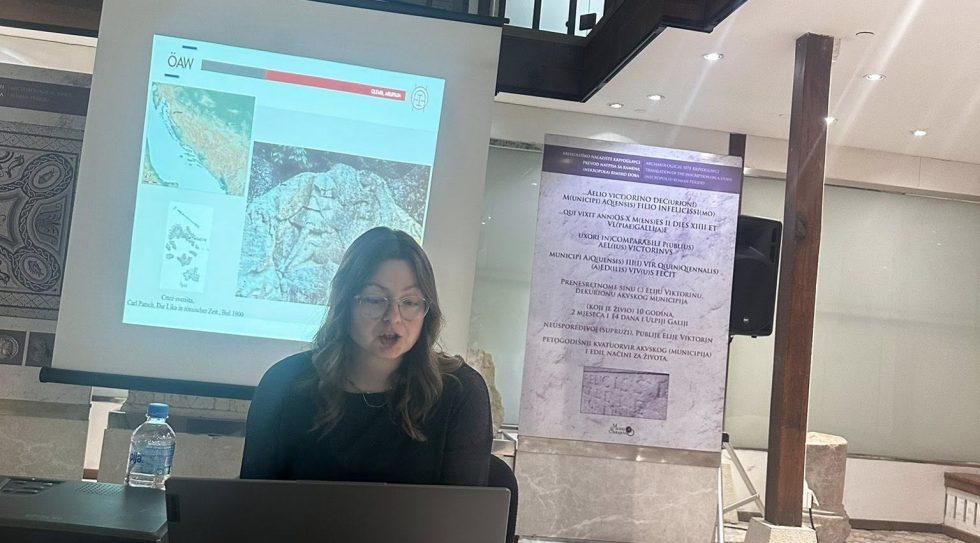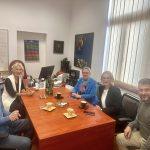Last night, a public lecture titled “In the Footsteps of the God Mithras: From Archival Testimonies to Contemporary Research” was held at Brusa Bezistan, presented by Dr. Nirvana Silnović from Vienna. The lecture connected two complementary research projects through a shared theme: the work of Carl Patsch and the cult of Mithras in the territory of the Roman province of Dalmatia.
The project Networks of Knowledge: Carl Patsch’s Correspondence and the Intellectual History of Early 20th-Century Bosnia and Herzegovina (MA7) reconstructs the intellectual networks and scholarly practices of the early 20th century through an analysis of Patsch’s correspondence. As a pioneer of Roman provincial archaeology in Bosnia and Herzegovina, Patsch conducted some of the first systematic excavations in the newly acquired territory of the Habsburg Monarchy. Research in the archives of Munich and Sarajevo reveals how newly gained knowledge about the ancient past of Bosnia and Herzegovina—including Mithraic monuments—was shaped and transmitted within the academic community of that time. Building upon this archival research, the project The Global, the Local, and the In-Between: the Cult of Mithras in the Roman Province of Dalmatia (APART-GSK) presents the first systematic study of the cult of Mithras in Roman Dalmatia. Combining critical analysis of archival materials with new fieldwork and laboratory research, the project highlights the importance of material culture for understanding this global cult phenomenon and seeks to explain how Mithras was accepted, adapted, and reinterpreted in local contexts.
Mithraism is the name for the religion, or cult, of the Indo-Iranian deity Mithras, which enjoyed great popularity throughout the Roman Empire from the 1st to the 3rd century.
Dr. Silnović explained that the wider Konjic area is the largest findspot of Mithraic reliefs depicting Mithras in ritual hunting and the sacrifice of the bull. Jajce is also home to an ancient temple of the god Mithras from the 4th century, discovered in 1931 and well preserved today.
Since 2021, Nirvana Silnović has been employed at the Austrian Archaeological Institute (OeAI) of the Austrian Academy of Sciences (OeAW) in Vienna, where she participates in several projects related to Roman religion and the study of polychromy on Roman monuments from the Danubian provinces.
The organizers of the lecture, alongside the Museum of Sarajevo, were the Center for Historical Research and the Bathinvs Association. The cooperation of these institutions is invaluable in promoting historical scholarship, publishing new research results, and involving students and young researchers in museum activities.
